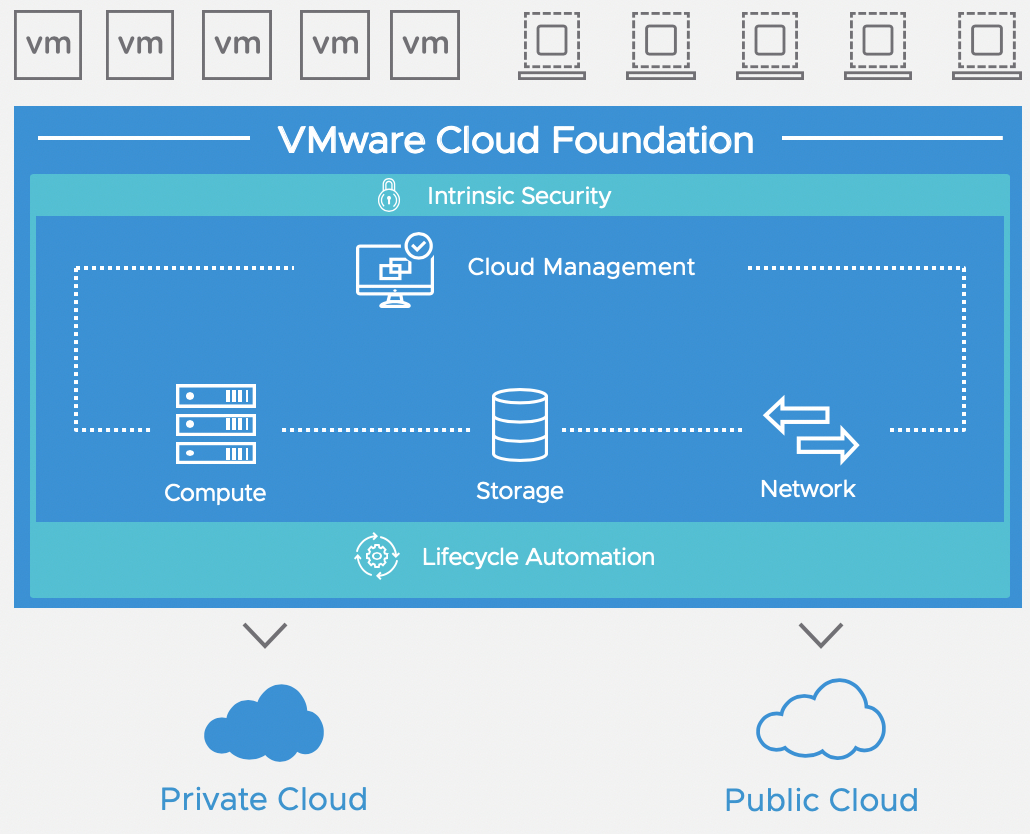
As an employee at VMware the only constant is change. Like our customers we are looking into creating a stack that is easy to built and operate in the most consistent way possible. Now that has been a challenge for any datacenter at scale. There were always teams in some dark corner in the datacenter experimenting with something different than the standard. Still in a majority of all datacenters across the globe vSphere is the standard virtualisation service. VMware as a company is been changing the company from a focus on server virtualisation to the virtualisation of all different component in the datacenter.
As you know I’m looking into vSAN in the Benelux region. My role within VMware is changing as well as we are becoming the tip of the spear to get that common platform and common operating model in place in the datacenters of our customers. That being said the strategy is clear for VMware. Any device, Any application on Any cloud. Today I want to focus on the Any cloud.
The question most of our customers ask is what do you actually need to to enable “Any Cloud”? They all have vSphere, any kind of storage and any kind of networking in place. This tradionally built datacenter comes with people and its processes to keep the datacenter running. Now be enable the customer to adopt any cloud you need some sort of language on all sides that is the “same”. If you have the same languages in place in all datacenters it enables flexibility and adaptability of cloud and the speed of cloud.
Ok ok but HOW!

That common language is actually a common platform. A platform that is virtualised and detached from ANY hardware component out there. As long as you are attached to a piece of hardware you have some sort of dependency that makes it more complex to make a seamless move to the cloud. So here is the actual HOW a combination of vSphere, NXS and vSAN is needed to help you detach from all dependencies. vSphere enables a compute services, vSAN enables the storage service and NSX enables the networking service. Together they enable all services needed to create that common language and consistent platform. VMware Cloud Foundation is a combination of these technologies and there is more! Keeping up with all the changes is always hard. Making sure all the different components are in-sync with each other. Also deploying new workloads is pretty hard in tradionally built datacenters. Guess what VCF comes with an SDDC manager that helps you keep up with the change. It will also help you with some of the common tasks like password rotation, security certificates,… You have now built a consistent platform that is consistent to operate. It enables you to to very complex things in the most consistent way possible making you ready to serve your business and deliver apps the business needs.
So you basically cloudified your datacenter at this point.
So what’s the next level?
Your next level is that you can now adopt other platform that are built on the same technology stack and GUESS WHAT?! VMware got you covered… VMware has multiple strong relationships with the gigaclouds out there. AWS, GCP and Azure are all running parts of their offering on VMware Cloud Foundation. You can start consuming these cloud services out there for your apps running in the cloud for example attach S3 buckets to the workloads running in AWS. Or encrypting your data with the AWS KMS.
Not only the gigaclouds but also a lot of VMware Cloud Providers are running the same consistent platform and the operating model? That is just the same as you are used to in your own datacenter. A policy in your on prem DC will be a policy in the public cloud.
The good thing is that you can now adopt cloud when it makes sense. Keeping IT in control but giving the business speed and agility where They need it. All that at the right cost for the purpose your company is aiming for.
I will start writing more articles on VMware Cloud Foundation and reference to existing blogs and topics out there to help all of you embrace the cloud one step at a time!

Leave a Reply